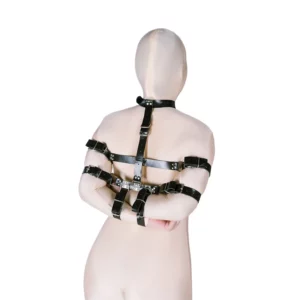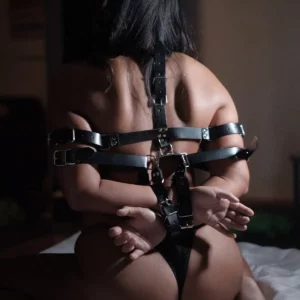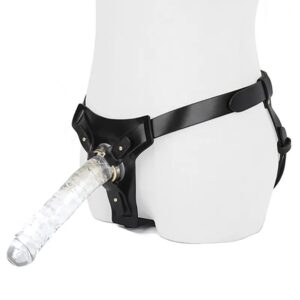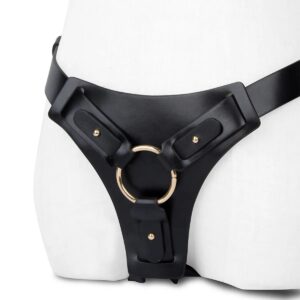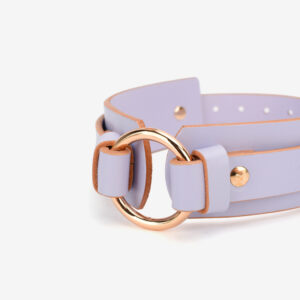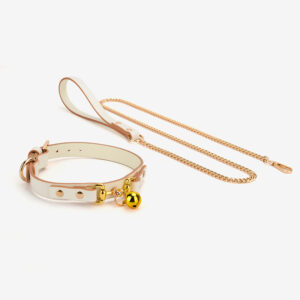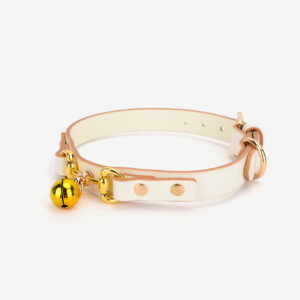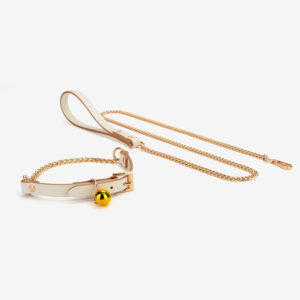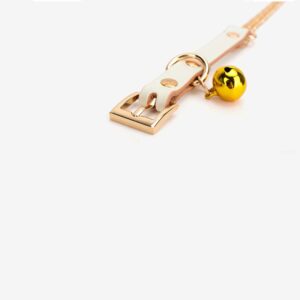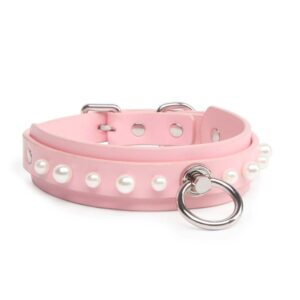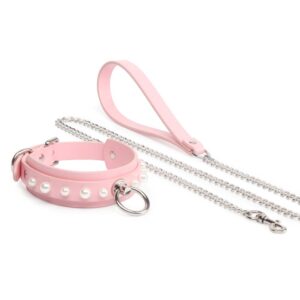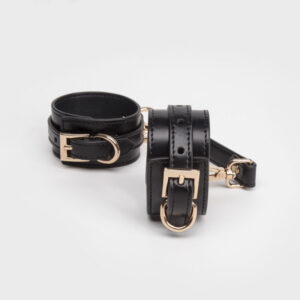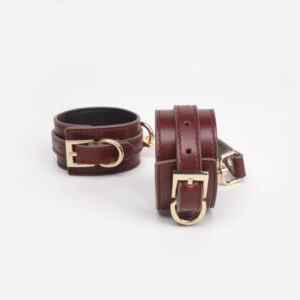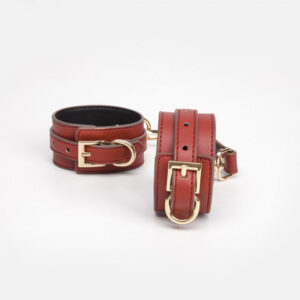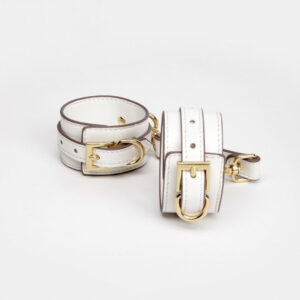Ownership kink can exist in various relationship structures, including monogamous and polyamorous relationships. It’s a diverse and inclusive aspect of the BDSM community.
Contents
ToggleWhat is an Ownership Kink?
Ownership kink is a unique aspect of BDSM relationships where the dominant has a form of “ownership” over the submissive. This isn’t about literal possession, but rather a specific agreement between the two people involved. Some couples might use symbols like collars to signify ownership. It’s all about the feeling of being owned for the submissive, and the sense of control for the dominant.
It’s important to remember that this isn’t a 24/7 kinkfest. Just like any other relationship, there are times when the kink takes a backseat to everyday life. And not all BDSM lifestyle relationships are called ‘ownership’. Some couples might use the term, while others might not.
The key to a successful ownership kink relationship is consent. Everyone involved needs to agree on what’s happening and what to expect from each other. This ensures that the dynamic is safe, enjoyable, and respectful for both parties.
Symbols of Ownership
Collars are the most common symbol of ownership, often worn by the submissives to signify their submission to the dominants. Collars can be made of various materials, such as leather or metal, and may feature locking mechanisms or other attachments like O-rings. Some people may wear a “day collar,” which is a more discreet version of a collar that can be worn in public.
Cuffs, bracelets, and anklets can also be used as symbols of ownership, as they resemble “cuffs” and can be locked like a collar. These items can be worn by the submissive partner to show their submission and connection to the dominant partner.
Other symbols of ownership may include tattoos, piercings, or even specific jewelry items chosen by the dominant partner for the submissive to wear. These symbols serve as a constant reminder of the power dynamic and the bond between the dominant and submissive partners in the relationship.
It’s important to remember that this isn’t a 24/7 kinkfest. Just like any other relationship, there are times when the kink takes a backseat to everyday life. And not all BDSM lifestyle relationships are called ‘ownership’. Some couples might use the term, while others might not.
The key to a successful ownership kink relationship is consent. Everyone involved needs to agree on what’s happening and what to expect from each other. This ensures that the dynamic is safe, enjoyable, and respectful for both parties.
-
29.99$
-
34.99$
Psychological Aspects of Ownership:
The psychological aspects of ownership kink are deeply rooted in the feeling of possession and control. In BDSM, this can manifest as the submissive partner experiencing a sense of being owned, and the dominant partner deriving satisfaction from the sense of control and ownership.
This psychological dynamic can be incredibly powerful and satisfying for both parties involved. For the submissive partner, the feeling of being owned can provide a sense of security, belonging, and validation. For the dominant partner, the sense of owning can fulfill a desire for control and power.
Ownership and Emotions
Ownership kink can extend beyond physical control to emotional aspects, creating a deeper and more intimate bond between partners. Emotional ownership in a kink relationship can involve the dominant having a certain level of control over the submissive’s emotions or emotional responses.
For some, this emotional aspect of ownership kink can be incredibly fulfilling. It can create a sense of belonging and security for the submissive, and a sense of control and satisfaction for the dominant. This emotional dynamic can be as simple as the dominant providing comfort and reassurance to the submissive, or it can involve more complex emotional interactions.
Emotional ownership can help individuals deal with past traumas or insecurities. For instance, the supportive environment of kink can provide a safe space for individuals to explore their emotions and desires, which can lead to self-acceptance, better sleeping habits, and improved relationship patterns.
Ownership Kink Advice for New Dom
If you’re a new dominant interested in exploring ownership kink, here are some key points to consider:
- Consent is Crucial: Both parties must agree to the terms of the relationship, and the submissive must willingly surrender control.
- Open and honest communication is essential. Discuss boundaries, desires, and fears with your partner. This will help ensure that the dynamic is safe, enjoyable, and respectful for both parties.
- Physical symbols, such as collars or cuffs, can be used to signify ownership in the relationship. These symbols can help reinforce the power dynamic and provide a tangible reminder of the bond between you and your partner.
- It’s important to respect your partner’s emotional boundaries and ensure that any emotional control is consensual and respectful.
- Always practice safe BDSM. This includes using safe words, regularly checking in with your partner, and ensuring that any physical activities are conducted safely.
10 Ideas of Ownership Kink
1. Collaring: Give your submissive a collar as a visual representation of ownership. Choose a collar that incorporates their preferences and symbolizes your unique bond.
2. Pet names: Use specific pet names or titles to reinforce the ownership between you and your submissive.
3. Rules and rituals: Establish rules and rituals for your submissive to follow, which can help reinforce the sense of ownership and control.
4. Marking: Use temporary or permanent markings, such as tattoos or body writing, to symbolize ownership.
5. Clothing control: Control your submissive’s clothing choices, either by selecting their outfits or imposing specific dress codes.
6. Free use: Reinforce the idea that the submissive’s body belongs to the dominant by engaging in free use, where the dominant can use the submissive’s body whenever and wherever they want.
7. Public displays: Engage in subtle public displays of ownership, such as holding your submissive’s hand or guiding them with a hand on the small of their back.
8. Restrictions: Impose restrictions on your submissive’s activities or interactions, such as limiting their social media usage or requiring permission to engage in certain activities.
9. Training: Implement training routines to teach your submissive specific behaviors or skills that align with your ownership dynamic.
10. Punishments and rewards: Use punishments and rewards to reinforce the ownership dynamic and maintain control over your submissive’s behavior.
FAQs
Can ownership kink exist in non-monogamous relationships?
Yes, ownership kink can exist in various relationship structures, including polyamorous relationships.
Is ownership kink dangerous?
No. Like any BDSM activity, ownership kink can be safe as long as it is practiced with consent, communication, and respect for boundaries.
Can ownership kink help with past traumas or insecurities?
While BDSM and kink are not a replacement for professional therapy, some individuals find that the supportive environment of kink can provide a safe space to explore their emotions and desires, which can lead to self-acceptance and improved relationship patterns.
Can ownership kink involve a contract?
Yes, some people in ownership kink relationships choose to create a contract that specifies the expectations and activities involving “ownership”. This can help ensure clear communication and mutual understanding of the relationship dynamics.
Can someone actually own you in an ownership kink relationship?
No, slavery was outlawed many years ago and no one can actually own you. The idea of being someone’s property is more about creating agreements and expectations that cause a heightened sense of emotional and sexual arousal.
Is ownership kink legal?
Yes, ownership kink between consenting adults is legal. The concept of “ownership” in this context refers to a specific dynamic agreed upon by the partners, not actual legal ownership of another person.
-
25.99$

